Recent Trends in Load Forecasting Technology for the Operation Optimization of Distributed Energy System
Abstract
1. Introduction
2. Topological Structure and Mathematical Expressions of the Distributed Energy System
2.1. Topological Structure
2.2. Mathematical Expression
3. Load Forecasting
3.1. Fundamental Research
3.1.1. Concept and Classification
3.1.2. Research Methods
3.1.3. Current Research Progress
3.1.4. Development Trend
3.2. Application Research
3.2.1. Current Conditions
3.2.2. Existing Cases
3.2.3. Development Trend
4. Conclusions
- (1)
- The load forecasting can be used to adjust the supply of the energy system, and the load can be precisely adjusted by changing the operation strategy. However, current studies on the load forecasting mostly remain at the theoretical stage and lack of experimental research, which indicates that there is still a relatively long way to go before the large-scale utilization of the load forecasting technique is achieved. By integrating big data and the cloud storage technology, not only the traditional cooling-heating-and-power load can be predicted, but comprehensive forecasting of multi-energy systems such as the gas load and electric vehicle charging and discharging load can also be realized. Further, by combining the power generation forecast of the renewable energy resources with the big data and the cloud storage technology, the renewable energies may be utilized to their full extent.
- (2)
- Most research regarding the load forecasting remains in the stage of algorithm optimization and precision improvement, and there is much more work to do in order to apply the predictive model in actual systems. For this reason, future work should focus on the development of technical solutions and products. The government may guide and initiate their use to increase the impact of load forecasting, thus the distributed energy system can be better developed.
Acknowledgments
Author Contributions
Conflicts of Interest
References
- The Sate Council of China: Strategic Action Plan for Energy Development (2014–2020). Available online: http://www.gov.cn/zhengce/content/2014-11/19/content_9222.htm (accessed on 7 June 2014).
- China: Enhanced Actions on Climate Change—China’s Intended Nationally Determined Contributions. Available online: http://www.sdpc.gov.cn/xwzx/xwfb/201506/t20150630_710204.html (accessed on 30 June 2015).
- Xi, J. Seek common and sustainable development to do cooperation and win-win partnership. In Proceedings of the United Nations Development Summit, New York, NY, USA, 26 September 2015. [Google Scholar]
- Molin, A.; Schneider, S.; Rohdin, P. Assessing a regional building applied PV potential—Spatial and dynamic analysis of supply and load matching. Renew. Energy 2016, 91, 261–274. [Google Scholar] [CrossRef]
- Cao, S.; Mohamed, A.; Hasan, A. Energy matching analysis of on-site micro-cogeneration for a single-family house with thermal and electrical tracking strategies. Energy Build. 2014, 68, 351–363. [Google Scholar] [CrossRef]
- Väisänen, S.; Mikkilä, M.; Havukainen, J. Using a multi-method approach for decision-making about a sustainable local distributed energy system: A case study from Finland. J. Clean. Prod. 2016, 137, 1330–1338. [Google Scholar] [CrossRef]
- Guarino, F.; Cassarà, P.; Longo, S. Load match optimisation of a residential building case study: A cross-entropy based electricity storage sizing algorithm. Appl. Energy 2015, 154, 380–391. [Google Scholar] [CrossRef]
- Hirvonen, J.; Kayo, G.; Cao, S. Renewable energy production support schemes for residential-scale solar photovoltaic systems in Nordic conditions. Energy Policy 2015, 79, 72–86. [Google Scholar] [CrossRef]
- Alahäivälä, A.; Heß, T.; Cao, S. Analyzing the optimal coordination of a residential micro-CHP system with a power sink. Appl. Energy 2015, 149, 326–337. [Google Scholar] [CrossRef]
- Cao, S.; Kai, S. Impact of simulation time-resolution on the matching of PV production and household electric demand. Appl. Energy 2014, 128, 192–208. [Google Scholar] [CrossRef]
- Mohamed, A.; Cao, S.; Hasan, A. Selection of micro-cogeneration for net zero energy buildings (NZEB) using weighted energy matching index. Energy Build. 2014, 80, 490–503. [Google Scholar] [CrossRef]
- Ahčin, P.; Šikić, M. Simulating demand response and energy storage in energy distribution systems. In Proceedings of the IEEE International Conference on Power System Technology, Hangzhou, China, 24–28 October 2010; pp. 1–7. [Google Scholar]
- Liao, N. Review of the short-term load forecasting methods of electric power system. Power Syst. Prot. Control 2011, 39, 147–152. (In Chinese) [Google Scholar]
- Raza, M.Q.; Khosravi, A. A review on artificial intelligence based load demand forecasting techniques for smart grid and buildings. Renew. Sustain. Energy Rev. 2015, 50, 1352–1372. [Google Scholar] [CrossRef]
- Singh, A.K.; Ibraheem, I.; Khatoon, S. Load forecasting techniques and methodologies: A review. In Proceedings of the International Conference on Power, Control and Embedded Systems, Allahabad, India, 17–19 December 2012; pp. 1–10. [Google Scholar]
- Powell, K.M.; Sriprasad, A.; Cole, W.J. Heating, cooling, and electrical load forecasting for a large-scale district energy system. Energy 2014, 74, 877–885. [Google Scholar] [CrossRef]
- Bianchi, F.M.; Maiorino, E.; Kampffmeyer, M.C.; Rizzi, A.; Jenssen, R. An overview and comparative analysis of Recurrent Neural Networks for Short Term Load Forecasting. arXiv, 2017; arXiv:1705.04378. [Google Scholar]
- Gupta, S.; Singh, V.; Mittal, A.P. Weekly Load Prediction Using Wavelet Neural Network Approach. In Proceedings of the Second International Conference on Computational Intelligence & Communication Technology, Odisha, India, 12–13 February 2016; pp. 174–179. [Google Scholar]
- Idowu, S.; Saguna, S.; Åhlund, C. Applied Machine Learning: Forecasting Heat Load in District Heating System. Energy Build. 2016, 133, 478–488. [Google Scholar] [CrossRef]
- Deb, C.; Eang, L.S.; Yang, J. Forecasting diurnal cooling energy load for institutional buildings using Artificial Neural Networks. Energy Build. 2016, 121, 284–297. [Google Scholar] [CrossRef]
- Chitsaz, H.; Shaker, H.; Zareipour, H. Short-term electricity load forecasting of buildings in micro grids. Energy Build. 2015, 99, 50–60. [Google Scholar] [CrossRef]
- Protić, M.; Shahaboddin, S. Forecasting of consumers heat load in district heating systems using the support vector machine with a discrete wavelet transform algorithm. Energy 2015, 87, 343–351. [Google Scholar] [CrossRef]
- Rodrigues, F.; Cardeira, C.; Calado, J.M. The Daily and Hourly Energy Consumption and Load Forecasting Using Artificial Neural Network Method: A Case Study Using a Set of 93 Households in Portugal. Energy Procedia 2014, 62, 220–229. [Google Scholar] [CrossRef]
- Bianchi, F.M.; De Santis, E.; Rizzi, A.; Sadeghian, A. Short-term electric load forecasting using echo state networks and PCA decomposition. IEEE Access 2015, 3, 1931–1943. [Google Scholar] [CrossRef]
- Chou, J.S.; Bui, D.K. Modeling heating and cooling loads by artificial intelligence for energy-efficient building design. Energy Build. 2014, 82, 437–446. [Google Scholar] [CrossRef]
- Abdoos, A.; Hemmati, M.; Abdoos, A. Short term load forecasting using a hybrid intelligent method. Knowl.-Based Syst. 2015, 76, 139–147. [Google Scholar] [CrossRef]
- Bacher, P.; Madsen, H.; Nielsen, H.A. Online short-term heat load forecasting for single family houses. Energy Build. 2013, 65, 5741–5746. [Google Scholar] [CrossRef]
- Ilić, S.; Selakov, A.; Vukmirović, S. Short-term load forecasting in large scale electrical utility using artificial neural network. J. Sci. Res. 2013, 72, 739–745. [Google Scholar]
- Zhang, L.; Yang, T.; Xiao, G. MATLAB Data Analysis and Data Mining; Machine Press: Beijing, China, 2015. (In Chinese) [Google Scholar]
- Tsai, C.F.; Lin, W.C.; Ke, S.W. Big Data Mining with Parallel Computing: A Comparison of Distributed and MapReduce Methodologies. J. Syst. Softw. 2016, 122, 83–92. [Google Scholar] [CrossRef]
- Cheng, F.; Fu, X.; Wang, S. Development of prediction models for next-day building energy consumption and peak power demand using data mining techniques. Appl. Energy 2014, 127, 1–10. [Google Scholar]
- Fan, C.; Xiao, F.; Yan, C. A framework for knowledge discovery in massive building automation data and its application in building diagnostics. Autom. Constr. 2015, 50, 81–90. [Google Scholar] [CrossRef]
- Xu, J.; Boom, T.V.; Schutter, B.D. Optimistic optimization for model predictive control of max-plus linear systems. Automatica 2016, 74, 16–22. [Google Scholar] [CrossRef]
- Camacho, E.F.; Bordons, C. Model Predictive Control; Springer: Berlin, Germany, 2004. [Google Scholar]
- Zhang, Y.; Zhang, T.; Wang, R. Optimal operation of a smart residential micro-grid based on model predictive control by considering uncertainties and storage impacts. Sol. Energy 2015, 122, 1052–1065. [Google Scholar] [CrossRef]
- International Energy Agency. Buildings Overview in: Transition to Sustainable Buildings; IEA Publications: Paris, France, 2013; p. 26. [Google Scholar]
- Sayaka, K.; Daisaku, N.; Saburo, M. Analysis of energy consumption of room air conditioners: An approach using individual operation data from field measurements. Appl. Therm. Eng. 2017, 112, 7–14. [Google Scholar]
- Yeung, T.M. Performance Evaluation of Hotel Chiller Plant, Research Project: 3103; The Hong Kong Polytechnic University: Hong Kong, China, 2000. [Google Scholar]
- Macarthur, J.W.; Mathur, A.; Zhao, J. On-Line Recursive Estimation for Load Profile Prediction. ASHRAE Trans. 1989, 95, 621–628. [Google Scholar]
- Livengood, D.J. The Energy Box: Comparing Locally Automated Control Strategies of Residential Electricity Consumption under Uncertainty; Massachusetts Institute of Technology: Cambridge, MA, USA, 2012. [Google Scholar]
- Papakonstantinou, N.; Savolainen, J.; Koistinen, J. District heating temperature control algorithm based on short term weather forecast and consumption predictions. In Proceedings of the IEEE International Conference on Emerging Technologies and Factory Automation, Berlin, Germany, 6–9 September 2016. [Google Scholar]
- Chen, Y.; Zhang, B.; Wang, J. Active control strategy for micro-grid energy storage system based on short-term load forecasting. Power Syst. Technol. 2011, 35, 35–40. (In Chinese) [Google Scholar]
- Li, S.; Goel, L.; Wang, P. An ensemble approach for short-term load forecasting by extreme learning machine. Appl. Energy 2016, 170, 22–29. [Google Scholar] [CrossRef]
- Fang, T.; Lahdelma, R. Evaluation of a multiple linear regression model and SARIMA model in forecasting heat demand for district heating system. Appl. Energy 2016, 179, 544–552. [Google Scholar] [CrossRef]
- Lee, W.J.; Hong, J. A hybrid dynamic and fuzzy time series model for mid-term power load forecasting. Int. J. Electr. Power Energy Syst. 2015, 64, 1057–1062. [Google Scholar] [CrossRef]
- Lahouar, A.; Slama, J.B. Day-ahead load forecast using random forest and expert input selection. Energy Convers. Manag. 2015, 103, 1040–1051. [Google Scholar] [CrossRef]
- Lou, C.W.; Dong, M.C. A novel random fuzzy neural networks for tackling uncertainties of electric load forecasting. Int. J. Electr. Power Energy Syst. 2015, 73, 34–44. [Google Scholar] [CrossRef]
- Vaghefi, A. Modeling and forecasting of cooling and electricity load demand. Appl. Energy 2014, 136, 186–196. [Google Scholar] [CrossRef]
- Qiao, W.; Chen, B. Hourly load prediction for natural gas based on Haar wavelet tansforming and ARIMA-RBF. J. Petrochem. Univ. 2015, 28, 75–80. [Google Scholar]
- Amini, M.H.; Kargarian, A.; Karabasoglu, O. ARIMA-based decoupled time series forecasting of electric vehicle charging demand for stochastic power system operation. Electr. Power Syst. Res. 2016, 140, 378–390. [Google Scholar] [CrossRef]
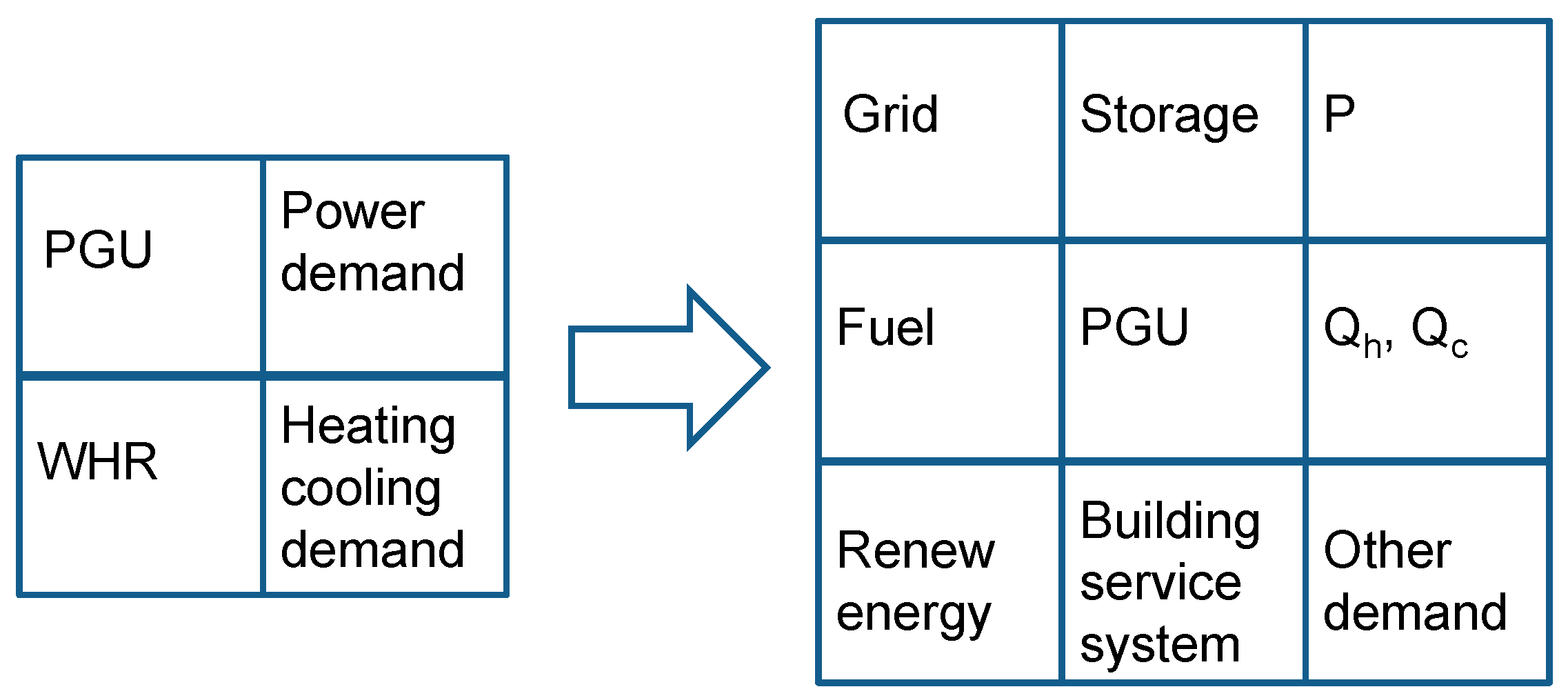
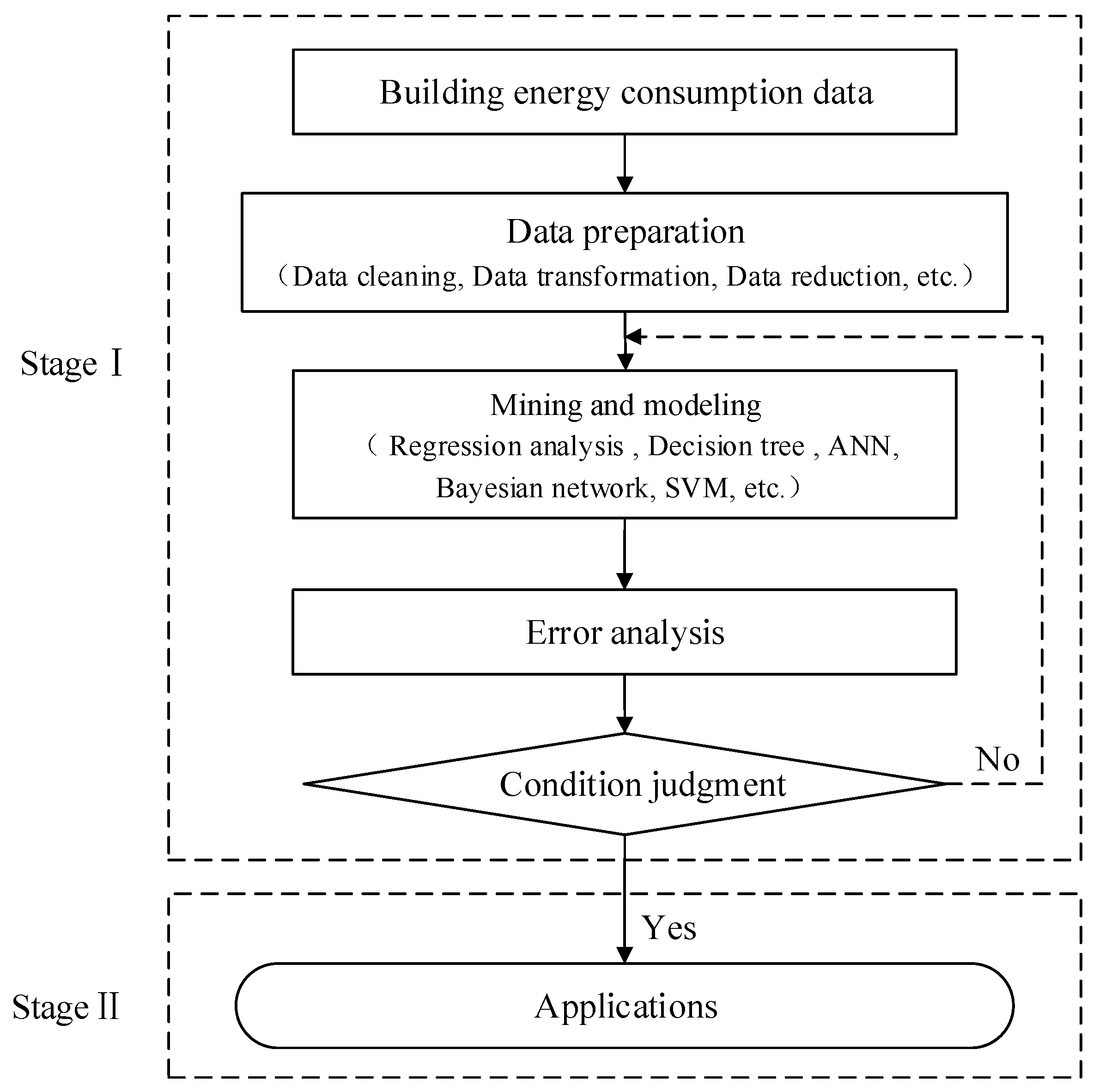
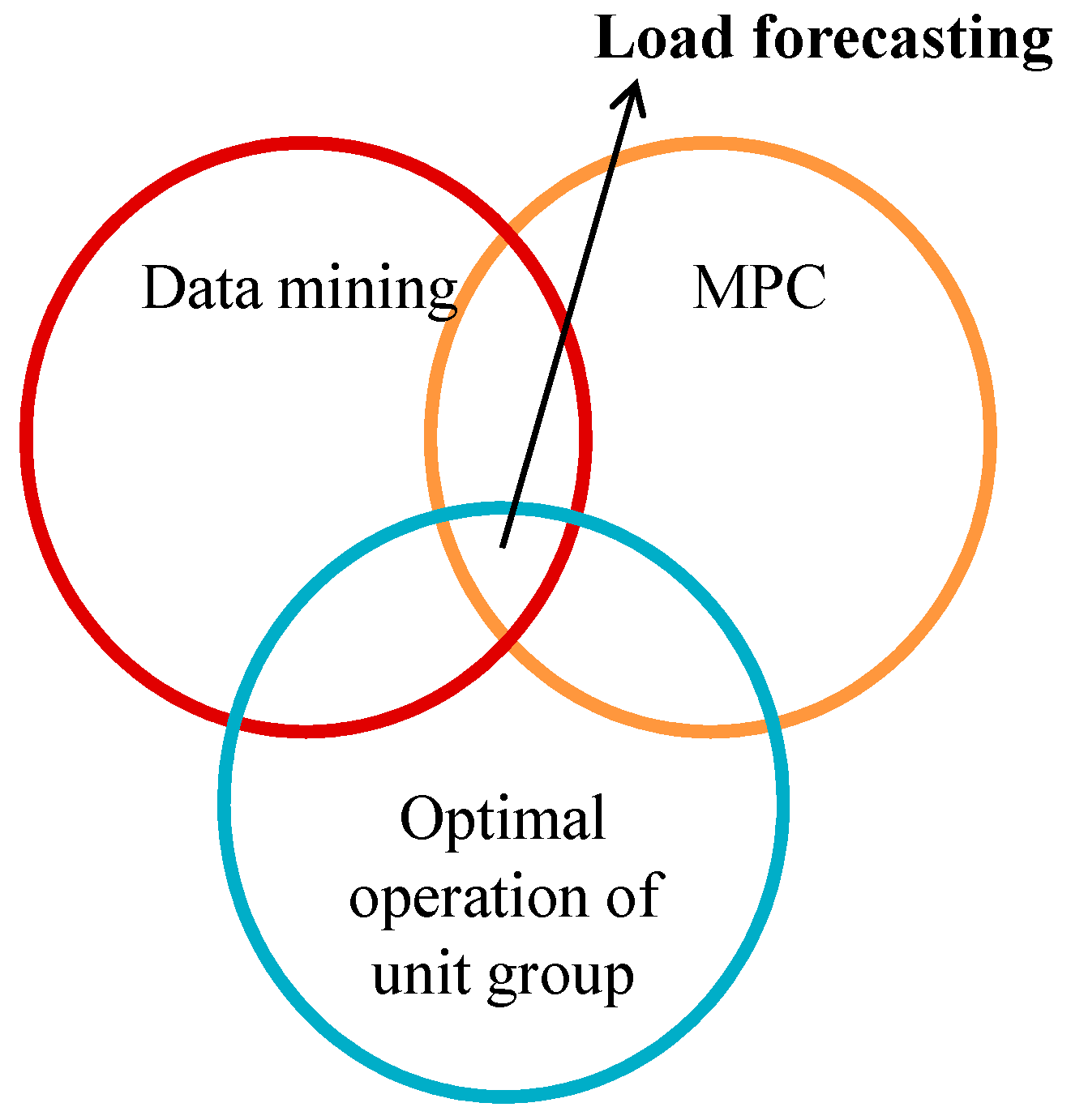
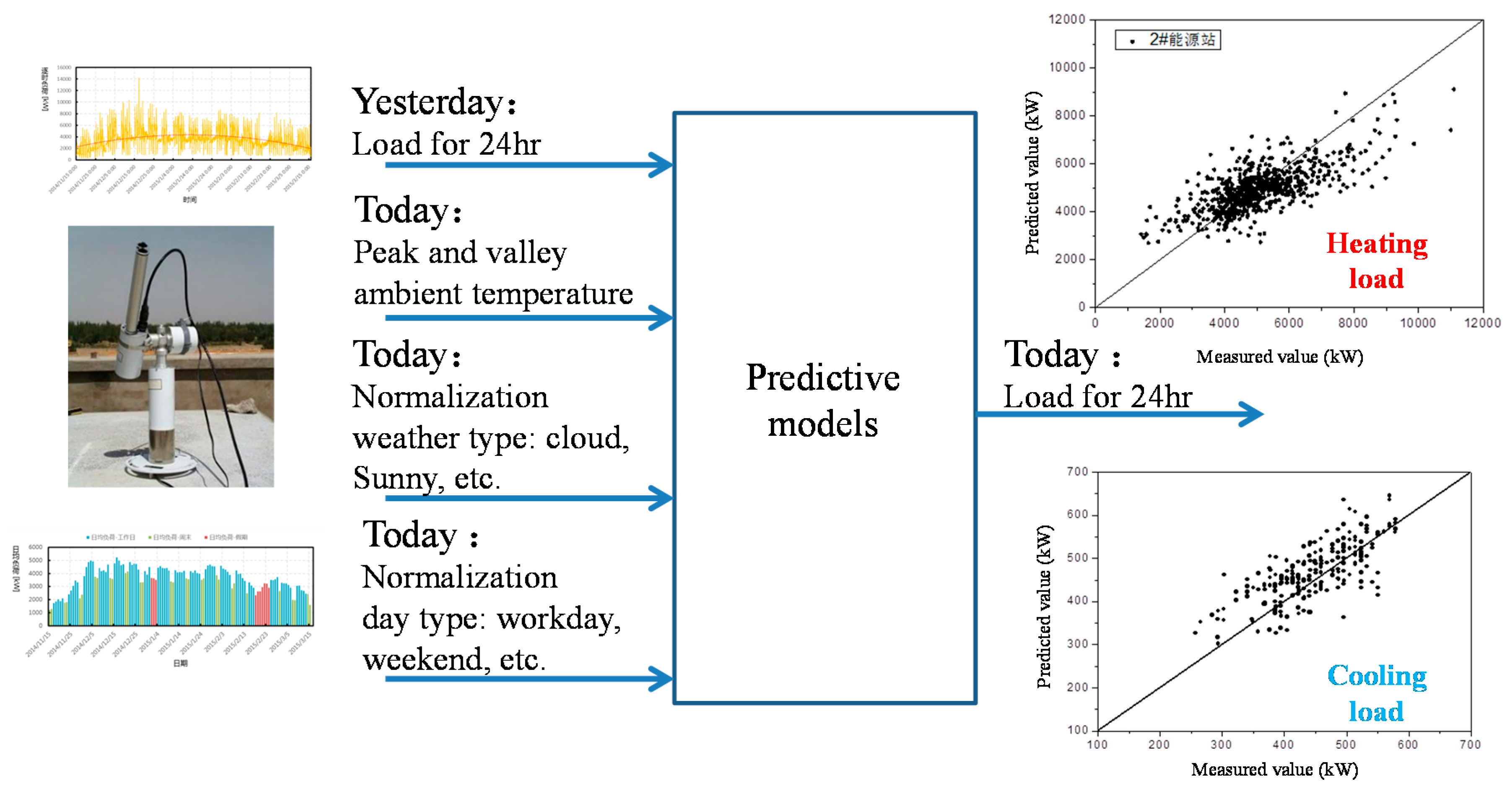
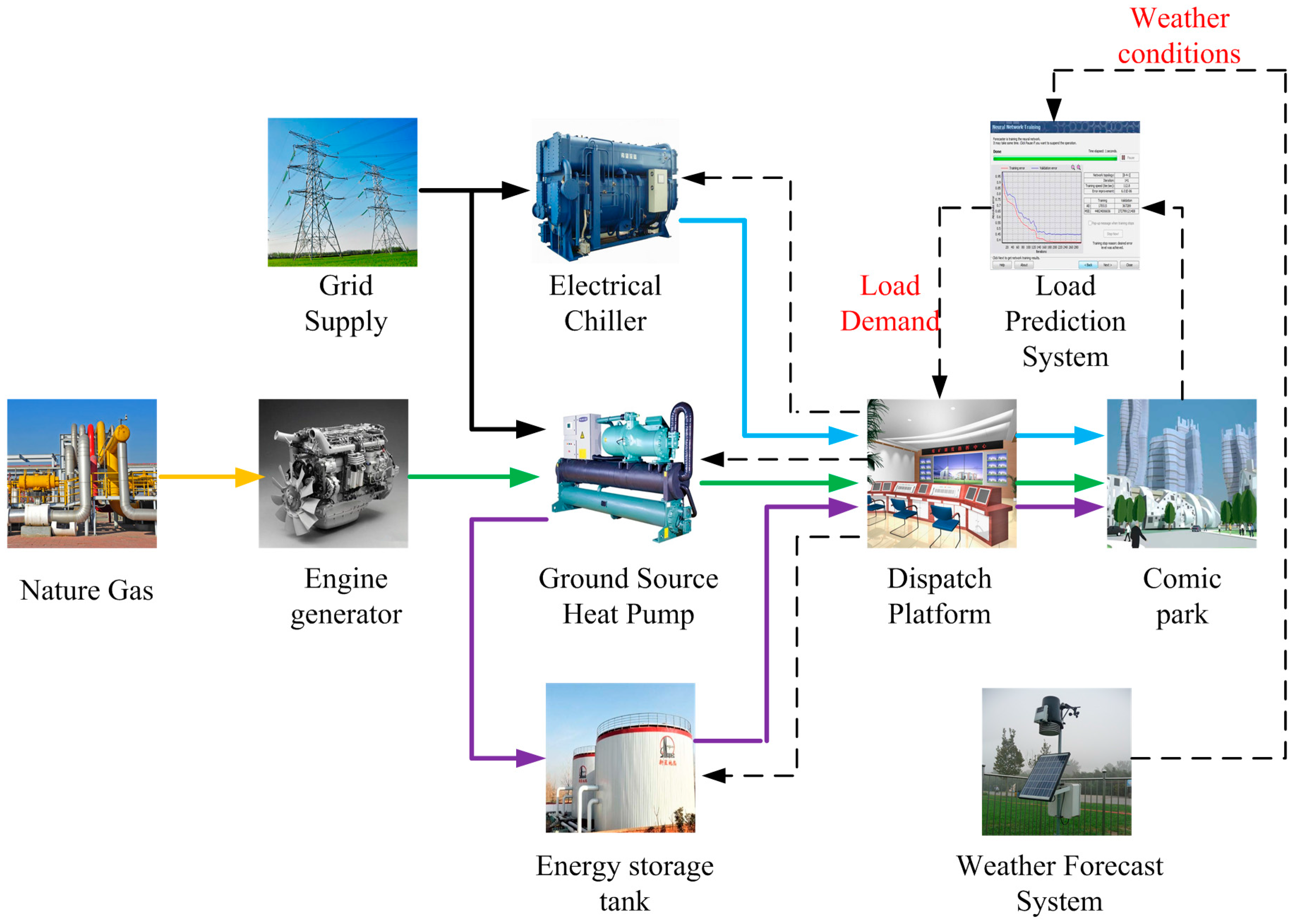
| Year | Authors | Source Side | Supply Side | Demand Side | Spatial Scale | |||||||
|---|---|---|---|---|---|---|---|---|---|---|---|---|
| Gas | PV | Electrical Grid | CHP | Electrical Storage | Heat Storage | Cooling | Heating | Power | Community | Family House | ||
| 2016 | Molin et al. [4] | √ | √ | √ | √ | √ | ||||||
| 2016 | Vaisanen et al. [6] | √ | √ | √ | √ | √ | √ | √ | ||||
| 2015 | Guarino et al. [7] | √ | √ | √ | √ | √ | ||||||
| 2015 | Hirvonen et al. [8] | √ | √ | √ | √ | √ | ||||||
| 2015 | Alahäivälä et al. [9] | √ | √ | √ | √ | √ | √ | √ | √ | |||
| 2014 | Cao et al. [5] | √ | √ | √ | √ | √ | √ | √ | √ | |||
| 2014 | Cao et al. [10] | √ | √ | √ | √ | √ | ||||||
| 2014 | Mohamed et al. [11] | √ | √ | √ | √ | √ | √ | √ | √ | √ | ||
| Year | Author | Prediction Model | Load Type | Time Scale |
|---|---|---|---|---|
| 2017 | Bianchi et al. [17] | Echo State Networks and PCA Decomposition | electricity | 10 min |
| 2016 | Gupta et al. [18] | wavelet neural network | electricity | hour |
| 2016 | Idowu et al. [19] | support vector machine | heating | hour |
| 2016 | Deb et al. [20] | artificial neural network | cooling | day |
| 2015 | Chitsaz et al. [21] | Self-Recurrent Wavelet Neural Network | electricity | hour |
| 2015 | Protic et al. [22] | SVM-WAVELET | heating | hour |
| 2015 | Abdoos et al. [23] | support vector machine | electricity | hour |
| 2015 | Bianchi et al. [24] | Recurrent Neural Networks | electricity | hour |
| 2014 | Chou et al. [25] | SVM-ANN | cooling and heating | hour |
| 2014 | Rodrigues et al. [26] | artificial neural network | electricity | hour |
| 2013 | Bacher et al. [27] | time-series | heating | hour |
| 2012 | Ilić et al. [28] | artificial neural network | electricity | hour |
| Year | Authors | Accuracy (MAPE) | Load Type | Purpose | Stage | |
|---|---|---|---|---|---|---|
| I | II | |||||
| 2016 | Li et al. [43] | 3.43% | electricity | save electricity | √ | |
| 2016 | Fang et al. [44] | 8.40% | heating | energy conservation | √ | |
| 2016 | Nikolaos et al. [41] | — | heating | energy conservation | √ | |
| 2015 | Lee et al. [45] | 2.61% | electricity | save electricity | √ | |
| 2015 | A. Lahouar et al. [46] | 2.30% | electricity | save electricity | √ | |
| 2015 | Lou et al. [47] | 4.56% | electricity | save electricity | √ | |
| 2014 | A. Vaghefi et al. [48] | 3.10% | electricity and cooling | save electricity | √ | |
| 2015 | Qiao et al. [49] | 2.59% | gas | energy conservation | √ | |
| 2014 | Amini et al. [50] | 1.44% | electric vehicle | Reduce the pressure of the grid | √ | |
| 2011 | Chen et al. [42] | — | electricity | improve power quality of micro-grid | √ | |
© 2017 by the authors. Licensee MDPI, Basel, Switzerland. This article is an open access article distributed under the terms and conditions of the Creative Commons Attribution (CC BY) license (http://creativecommons.org/licenses/by/4.0/).
Share and Cite
Su, P.; Tian, X.; Wang, Y.; Deng, S.; Zhao, J.; An, Q.; Wang, Y. Recent Trends in Load Forecasting Technology for the Operation Optimization of Distributed Energy System. Energies 2017, 10, 1303. https://doi.org/10.3390/en10091303
Su P, Tian X, Wang Y, Deng S, Zhao J, An Q, Wang Y. Recent Trends in Load Forecasting Technology for the Operation Optimization of Distributed Energy System. Energies. 2017; 10(9):1303. https://doi.org/10.3390/en10091303
Chicago/Turabian StyleSu, Pengwei, Xue Tian, Yan Wang, Shuai Deng, Jun Zhao, Qingsong An, and Yongzhen Wang. 2017. "Recent Trends in Load Forecasting Technology for the Operation Optimization of Distributed Energy System" Energies 10, no. 9: 1303. https://doi.org/10.3390/en10091303
APA StyleSu, P., Tian, X., Wang, Y., Deng, S., Zhao, J., An, Q., & Wang, Y. (2017). Recent Trends in Load Forecasting Technology for the Operation Optimization of Distributed Energy System. Energies, 10(9), 1303. https://doi.org/10.3390/en10091303




